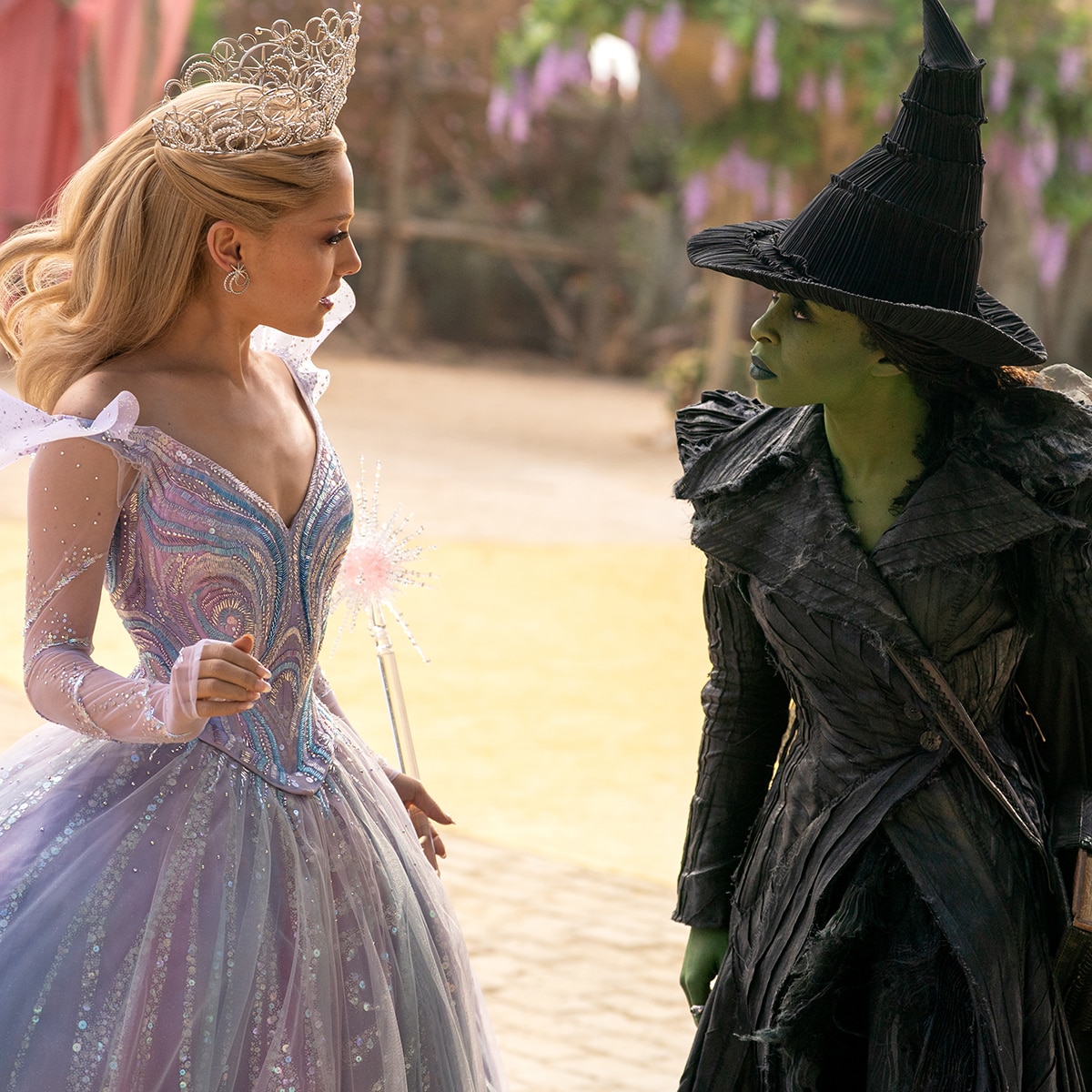
Please be aware that this article reveals key plot points from the musical Wicked, as well as the movies Wicked: Part One and Wicked: For Good. Spoilers ahead!
Fans couldn’t be happier that Wicked: For Good is here.
The highly anticipated follow-up to the 2024 film Wicked is now in theaters. It concludes the story of Elphaba, played by Cynthia Erivo, and Glinda, played by Ariana Grande, adapting the second half of the popular Broadway show.
The movie version of Wicked: For Good stayed very close to the first half of the musical, but the second half was expanded with three new songs—”Every Day More Wicked,” “No Place Like Home,” and “The Girl in the Bubble.” The film also added more detail to the story that audiences originally experienced on stage.
The movie focuses on the difficult relationship between Elphaba and Glinda, as Elphaba is increasingly known as the Wicked Witch of the West. We also see more of the stories surrounding other characters like Fiyero (Jonathan Bailey), Nessarose (Marissa Bode), Boq (Ethan Slater), Madame Morrible (Michelle Yeoh), and the Wizard of Oz (Jeff Goldblum).
One of the key reasons the musical Wicked was divided into two films was to allow more time to fully develop the story. Director Jon M. Chu explained that the extra footage in Wicked: For Good helps show how Elphaba and Glinda, also known as the Good Witch of the North, work to rebuild their relationship.

He explained in a statement that Wicked: For Good was planned to be a more expansive story. The characters audiences connected with in the first movie are now facing the challenges of adulthood and making important, life-altering decisions. He noted that the setting has moved beyond the school environment.
The musical Wicked began as a novel by Gregory Maguire in 1995, titled Wicked: The Life and Times of the Wicked Witch of the West. The stage version premiered in 2003, starring Idina Menzel as Elphaba and Kristin Chenoweth as Glinda. Both actresses later made brief appearances in the film adaptation.
Let’s quickly explore the journey of bringing the story of Wicked: For Good to the movies.
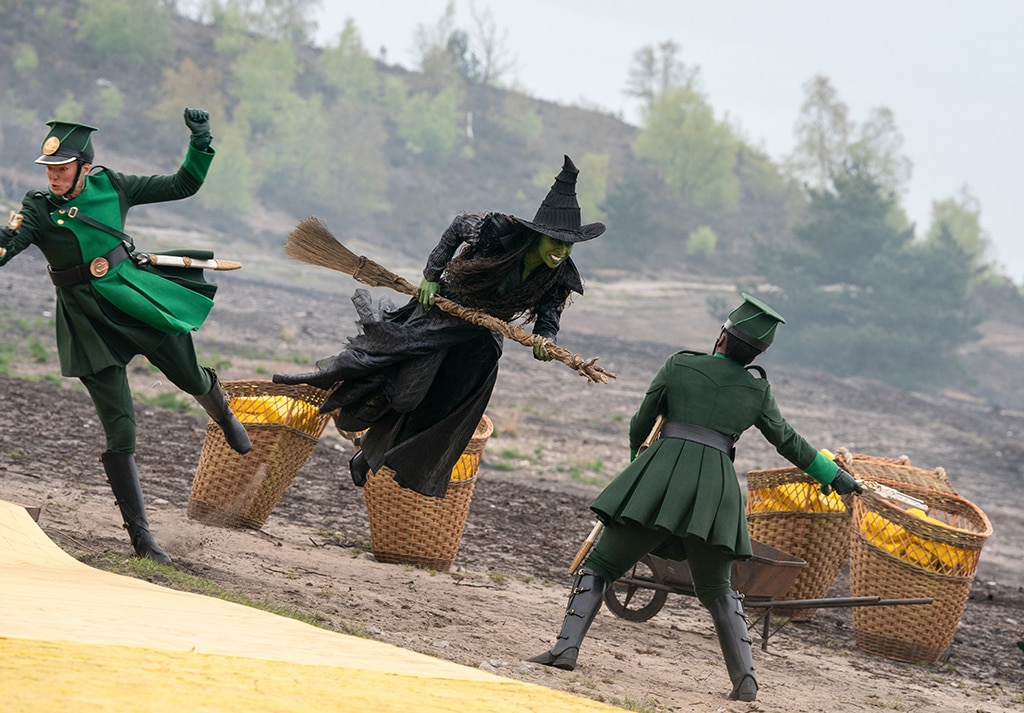
The movie Wicked: For Good starts right after the first film ended, with Elphaba (played by Cynthia Erivo) flying off to use her powers to help the talking animals of Oz. The story opens with Elphaba actively working to save these animals and prevent the construction of the Yellow Brick Road.
The first new song from the upcoming movie, “Every Day More Wicked,” has been released. It’s a longer version of the song that opens the musical, and features the main cast – including Ariana Grande as Glinda and Michelle Yeoh as Madame Morrible – explaining how their characters have been handling the Wicked Witch of the West.
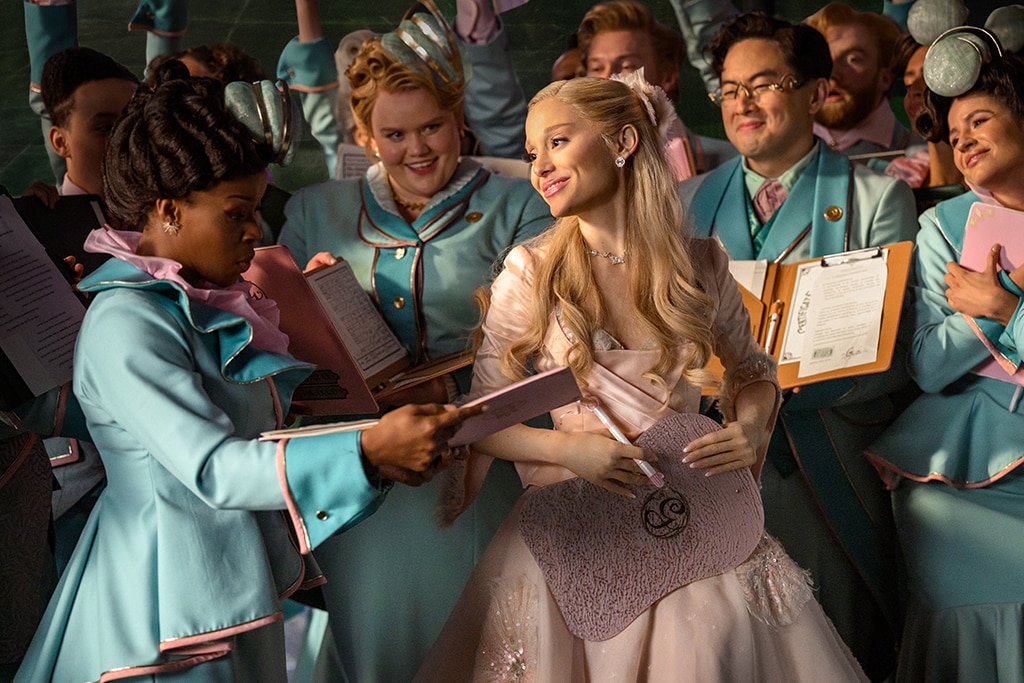
As a huge fan, I loved how the movie, just like the musical, really solidifies Glinda’s role as the Wizard’s public face. We even get to see her get her iconic bubble and wand – it’s the moment she truly becomes Glinda the Good Witch! It’s so clever how they included a flashback to young Glinda getting her wand as a gift. It perfectly mirrors the flashback with young Elphaba from the first part, highlighting the stark difference in how people reacted to their powers – Elphaba scared everyone, but Glinda’s friends were thrilled! It really emphasizes that contrast and how perceptions shape everything.
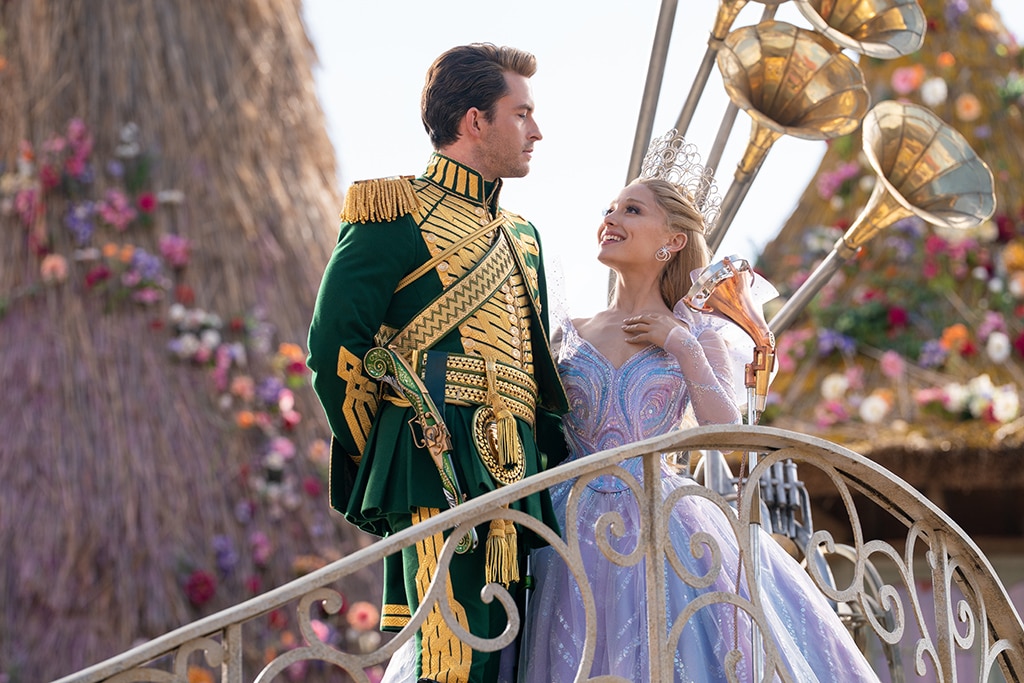
The song “Thank Goodness,” which starts the second act of the stage show, doesn’t appear until later in the movie. Instead, it’s used to mark the completion of the Yellow Brick Road and to celebrate the engagement of Fiyero (played by Jonathan Bailey, who is Captain of the Gale Force in the film) and Glinda. This celebration is interrupted by Elphaba, who, unlike in the musical, crashes the party to warn the people of Oz about the Wizard’s wickedness. She uses her broom to write a message in the sky, similar to how the Wicked Witch does in the original 1939 film, The Wizard of Oz.
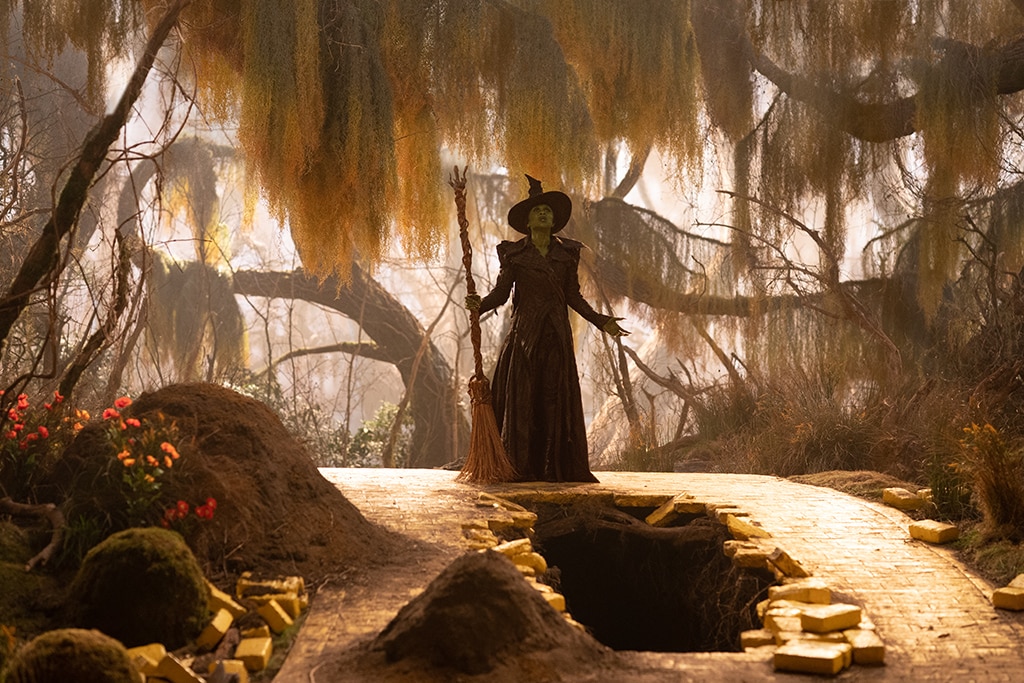
Elphaba shares a touching reunion with Dulcibear (Sharon D. Clarke) while trying to prevent the talking animals from fleeing Oz. During this scene, she performs a new song from the movie, “There’s No Place Like Home,” where she encourages them to remember the beauty of Oz and the importance of unity and kindness.
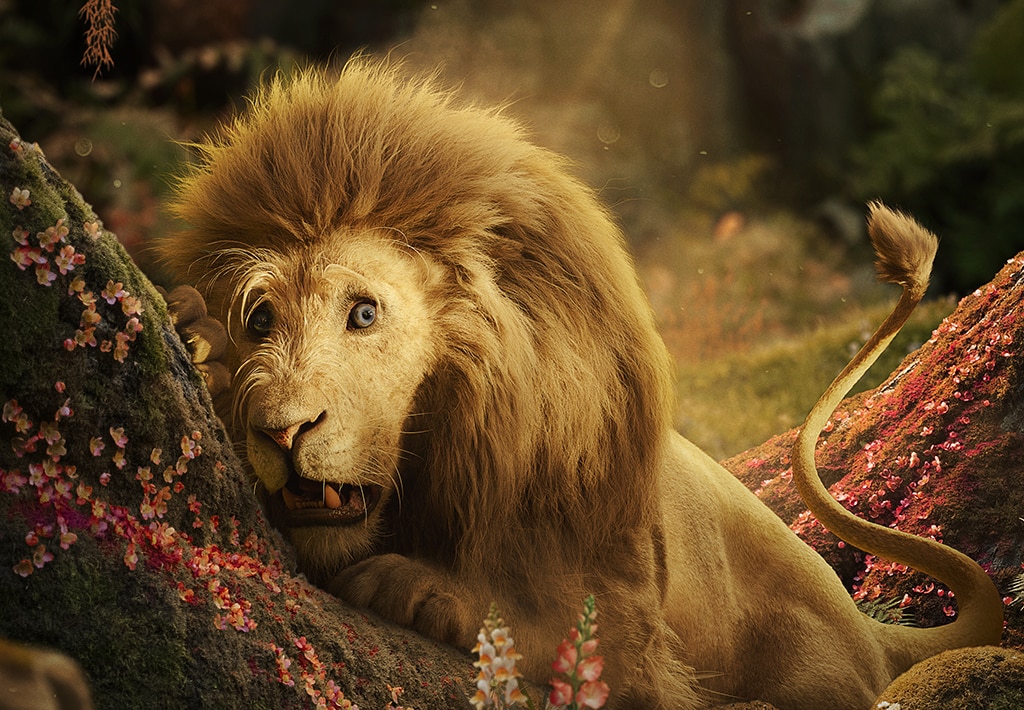
The Cowardly Lion, played by Colman Domingo, has a much bigger part in the movie than he did in the stage show – where only his tail was visible. The film reveals that he was the lion cub Elphaba and Fiyero saved from Shiz, and now, as an adult, he confronts Elphaba, blaming her for turning him into a coward by disrupting his former life.
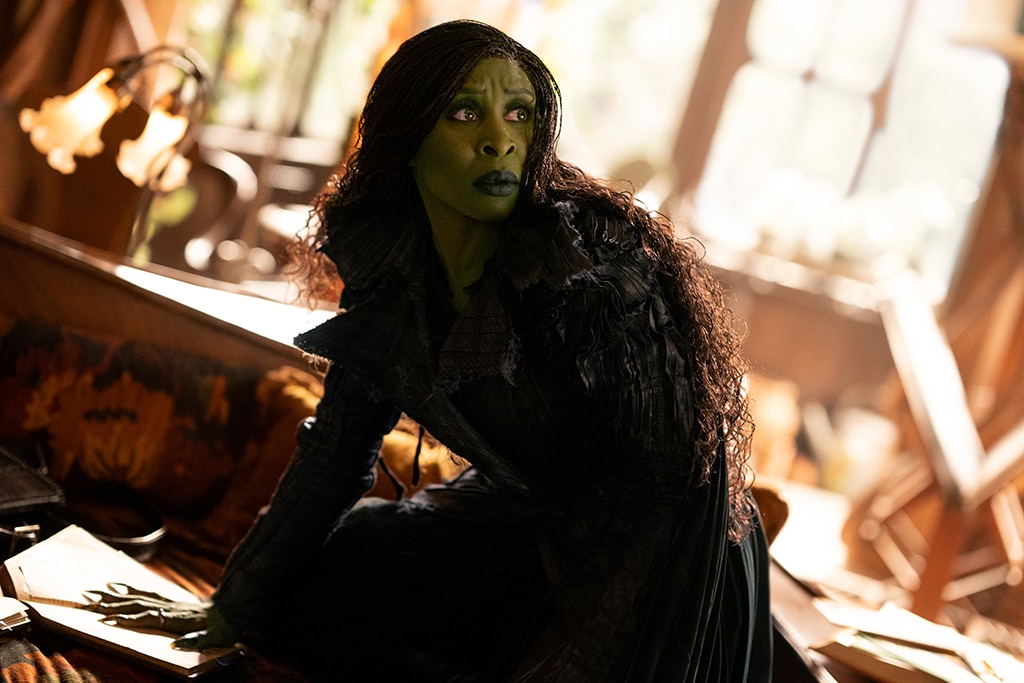
Similar to the stage production, Nessarose (played by Marissa Bode) becomes the governor of Munchkinland after their father, Andy Nyman, passes away. While the movie shows Elphaba already knowing this, in the musical, she learns it from her sister.
Because she’s still in love with Boq (Ethan Slater), she’s kept him as her servant, hoping he’ll eventually reciprocate her feelings. In the film, she tells him he’s free to go after Glinda, whom he still loves, but he soon discovers a new rule: Munchkins now require travel permits, preventing his departure.
He goes back to Nessarose just before Elphaba arrives, seeking her sister’s assistance. The song “The Wicked Witch of the East” now includes new lyrics where Nessarose reflects on their time at Shiz and blames Elphaba for her troubles. In the stage musical, Elphaba magically gives her sister’s silver shoes the power to help Nessarose walk again, freeing her from the wheelchair. However, the movie version shows Elphaba enchanting the shoes to allow Nessarose to float, after which she returns to using her wheelchair.
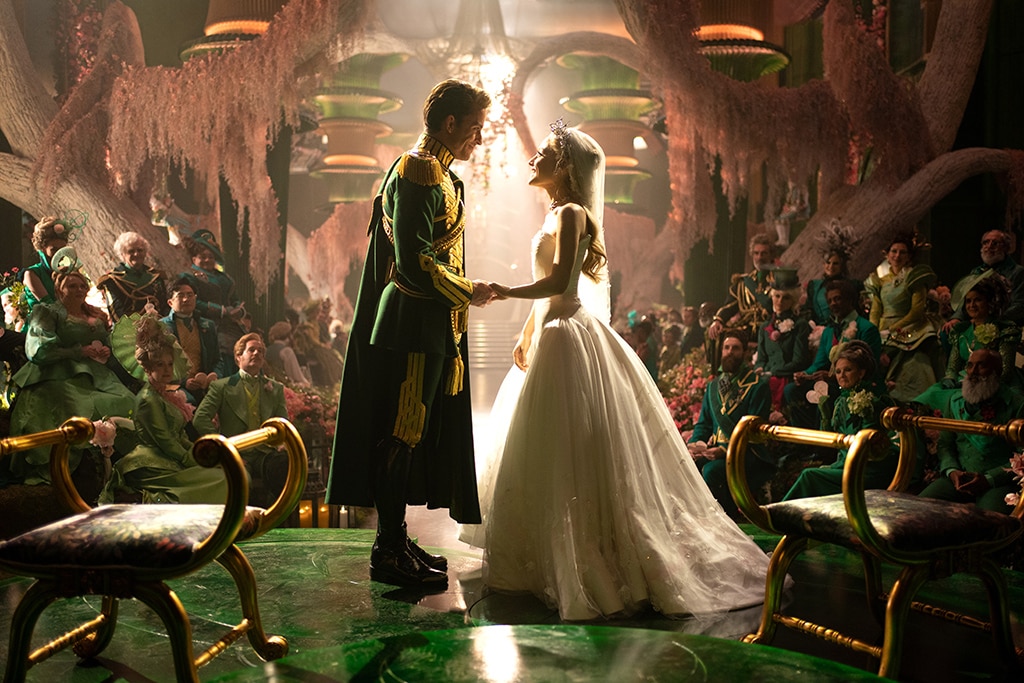
As a huge fan, I was thrilled to finally see Glinda and Fiyero’s wedding in the movie – something the stage show doesn’t even show us! Right before that beautiful moment, Elphaba arrives in the Emerald City and meets the Wizard, played brilliantly by Jeff Goldblum. He and Glinda try to get her on their side with a fantastic rendition of “Wonderful,” and it’s even longer than the song in the musical, with verses sung only by the Wizard on stage. It’s a really special addition!
The Wizard reluctantly agrees to release the flying monkeys, but they betray Elphaba by leading her to a secret underground area where he’s imprisoned talking animals, including Doctor Dillamond. Furious, Elphaba liberates the animals, and they cause chaos, disrupting Glinda and Fiyero’s wedding before they can exchange vows.
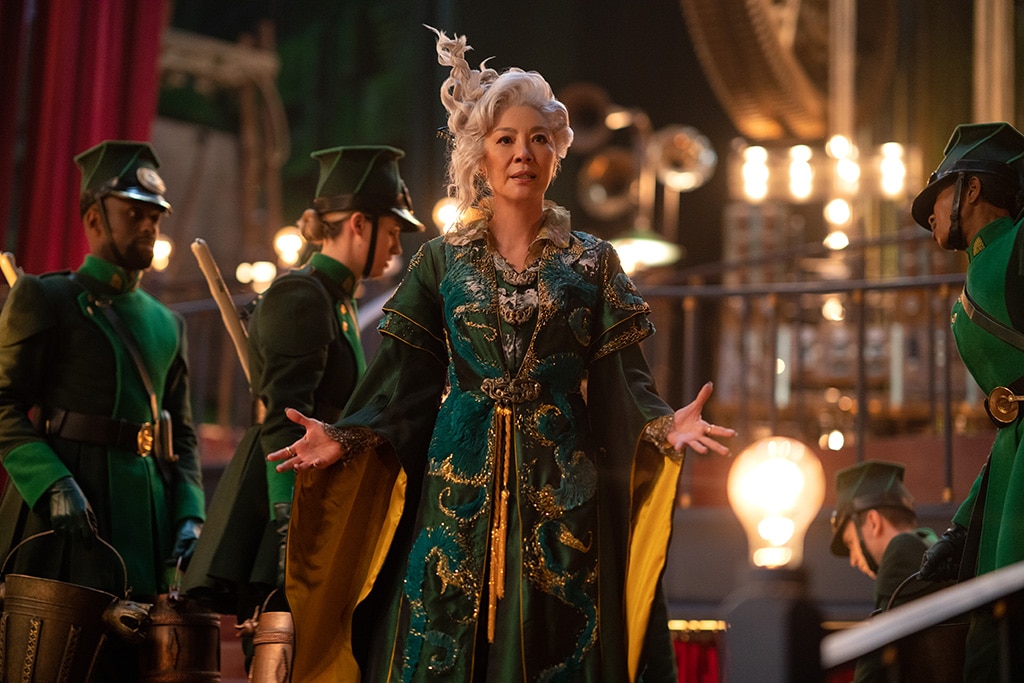
The film shows Madame Morrible creating the cyclone that devastates Oz. We then see the storm sweep across the land, eventually dropping a house on Nessarose while she’s searching for Boq.
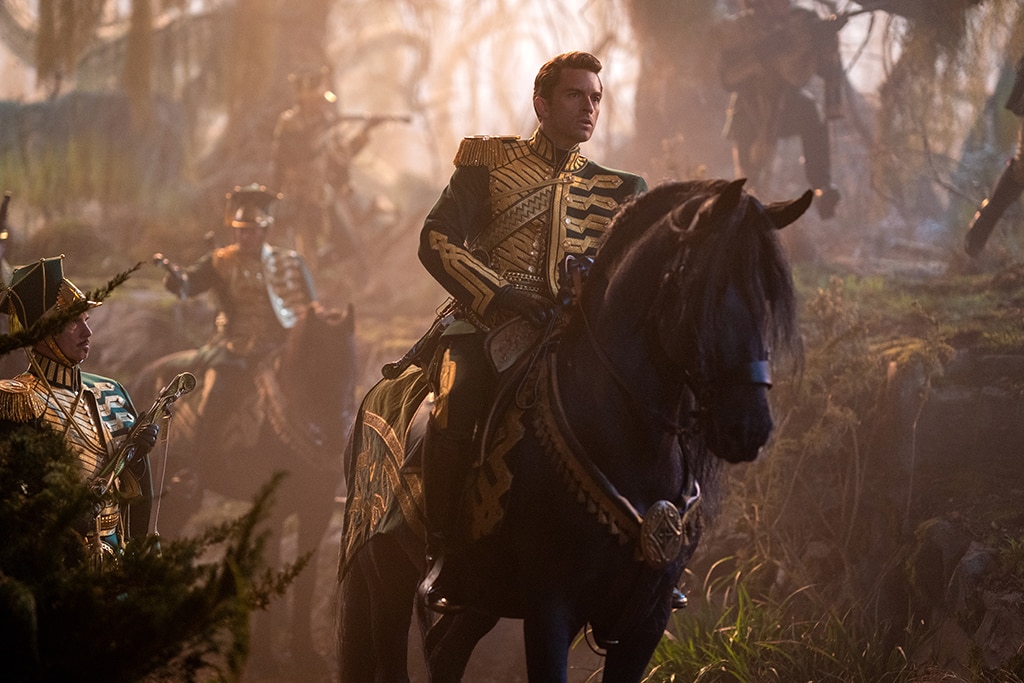
Similar to the stage show, Elphaba transforms Fiyero into the Scarecrow while attempting to rescue him from the guards. This version, however, shows the transformation happening – viewers see straw gradually covering his body.

As a lifelong fan, I’ve always loved the little moments with Dorothy and Toto! While they aren’t really in the stage production, the movie gives us a fleeting look – we never see her face clearly, but we definitely catch a glimpse of Dorothy, Toto, and her friends – the Scarecrow, Tin Man, and Lion – as they journey to the Emerald City. It’s wonderful to see them receive their mission from the Wizard: to bring back the Wicked Witch’s broom. And I always get a thrill when Dorothy, near the very end, calls out to the Wizard, begging him to wait so she can finally go home. It’s such a sweet, hopeful moment!
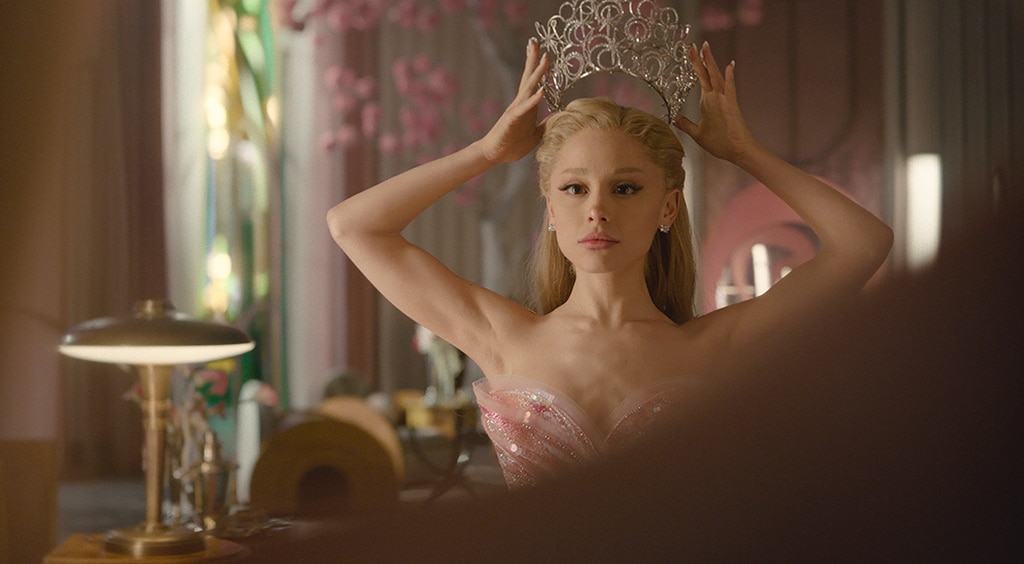
Elphaba isn’t the only one expressing herself through music; Glinda sings about her disappointing life in “The Girl in the Bubble.” This song helps her understand she needs a change, so she leaves the Emerald City to find Elphaba and warn her about the Wizard’s plans.
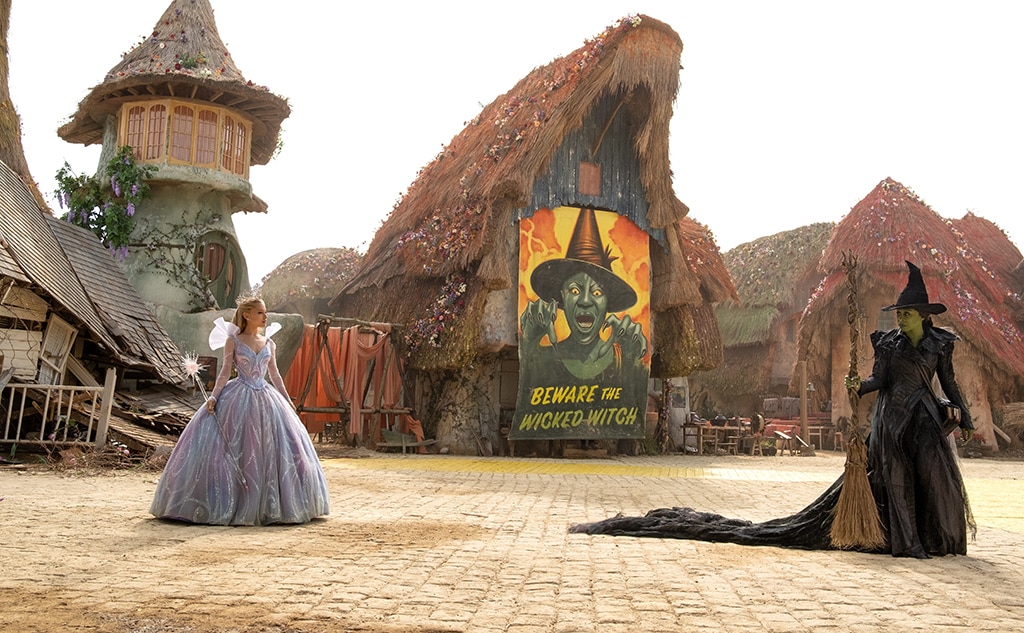
As a huge fan, I was thrilled to see the movie expand on the beautiful ending from the musical! You know how Elphaba and Fiyero fake her death to be together? Well, the movie shows us what happens next! It was so heartwarming to see Doctor Dillamond return to Shiz, and Glinda actually start learning from the Grimmerie. But the best part was seeing Elphaba and Fiyero finally walk off towards a life beyond Oz. And the filmmakers were so clever – the very last shot was a gorgeous recreation of the musical’s famous poster, with Glinda and Elphaba together in a flashback. It was a perfect nod to the original and just made me love the story even more!
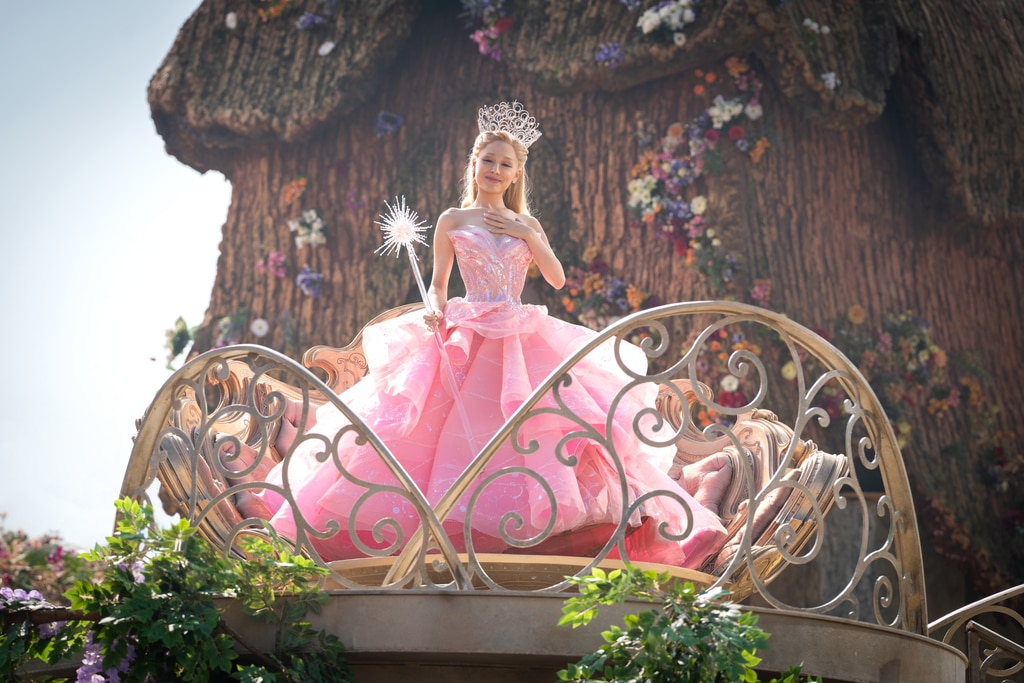
Oh my gosh, you will NOT believe how they changed things from the book to the movie! In the Wicked novel, there’s this amazing traveling puppet show, the Clock of the Time Dragon, and it’s a really big deal. When the Broadway show started, they actually included it, but called it the Time Dragon Clock – so cool! But in the movie? Ugh, they barely mention it! Glinda just throws it in as she’s telling everyone Elphaba is gone. Like, seriously? It was such a magical part of the story, and they just… glossed over it. It makes me so sad!
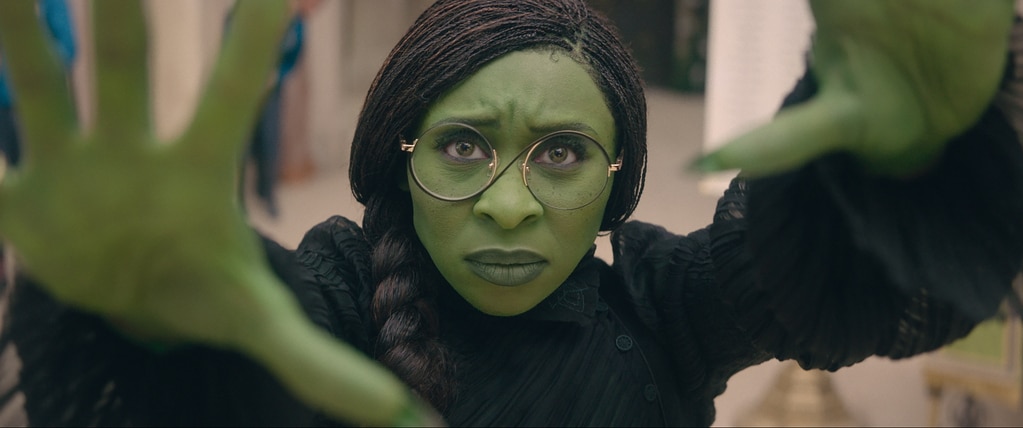
The stage musical hints at Elphaba’s birth, but the movie shows her childhood, including the first signs of her powers. The film also introduces Dulcibear, a talking bear who helps raise Elphaba after her father is shocked by her green skin. Dulcibear’s presence explains Elphaba’s strong connection to animals and her fight against their mistreatment – a key theme in both the movie and the stage production.
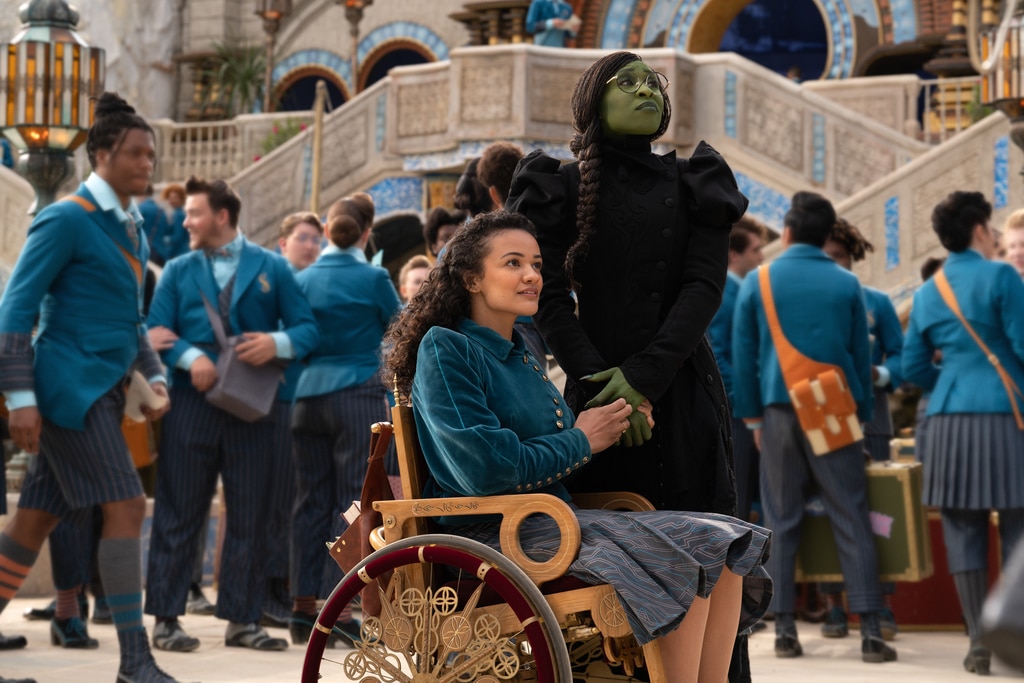
In the musical version of the story, Elphaba is already a student at Shiz University, attending to support her sister, Nessarose. However, in the movie, she only goes to help Nessarose move in. It’s there that Madame Morrible notices Elphaba’s magical abilities and convinces her to enroll. After that, the story follows a similar path: Glinda unintentionally ends up as Elphaba’s roommate, and the musical explains this happened because of an administrative oversight with the room assignments.
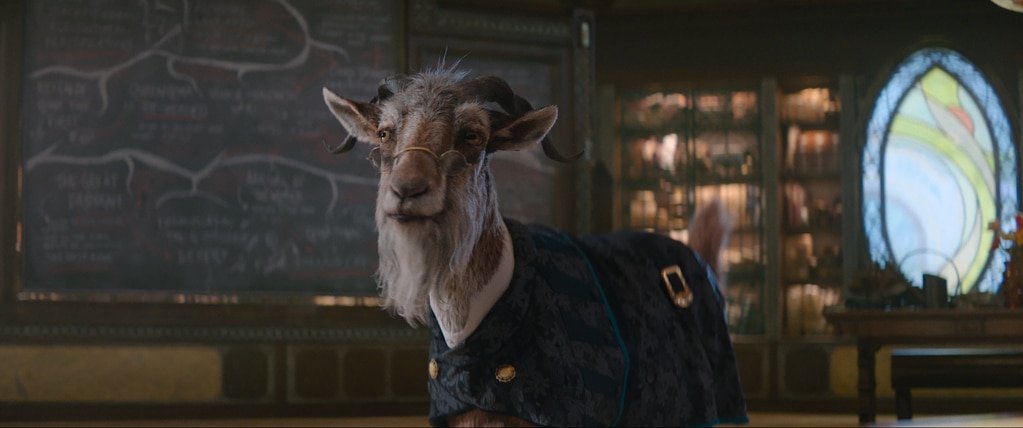
Both the stage and film versions of the story feature Doctor Dillamond, a talking goat who teaches history at Shiz University and warns his students about a growing threat to animals in Oz. The movie expands on this by showing other talking animals involved in a resistance, but these characters aren’t in the musical. The song “Something Bad” happens in Doctor Dillamond’s classroom in the stage version, while in the movie, he sings it with Elphaba in his home.
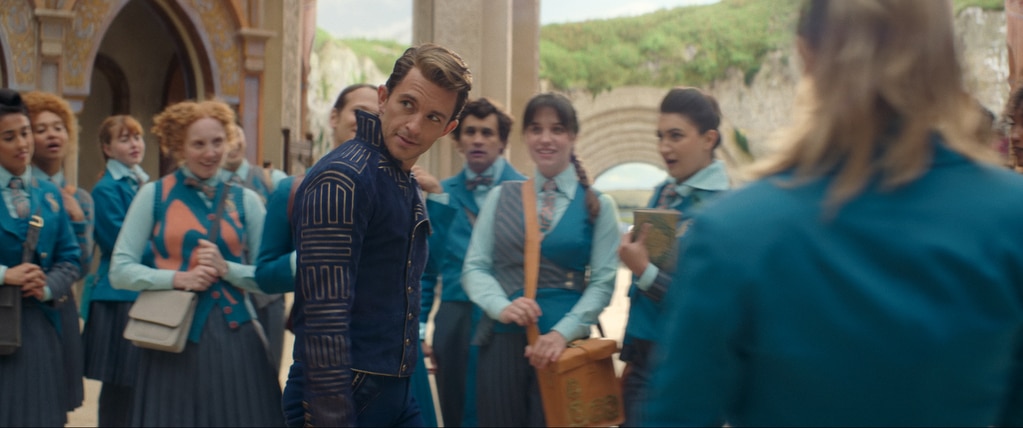
Both the stage musical and the film feature a love triangle involving Glinda, Elphaba, and Fiyero. However, the way Fiyero is introduced and how he first meets Elphaba differs between the two versions. In the musical, he nearly runs her over with his carriage while arriving in Shiz, assisted by his servant. In the movie, he almost tramples her while horseback riding in the woods near the university, and playfully remarks that she was camouflaged by the surrounding plants.
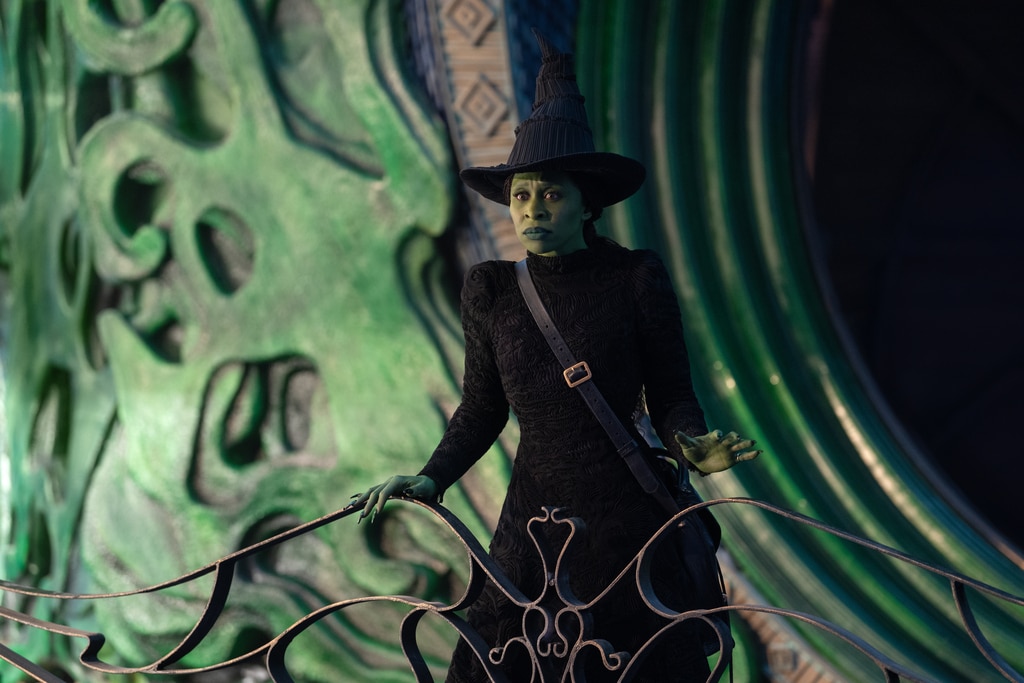
When Doctor Dillamond is fired from Shiz, a new professor arrives and demonstrates new animal cages, using a distressed lion cub as an example. Elphaba is angered by this. In the stage version, she causes chaos, allowing her and Fiyero to free the cub and take it to safety. The movie version differs; Elphaba uses poppies to put everyone to sleep—a nod to the famous poppy field scene in the original 1939 film, The Wizard of Oz, where Dorothy and her companions fall asleep.
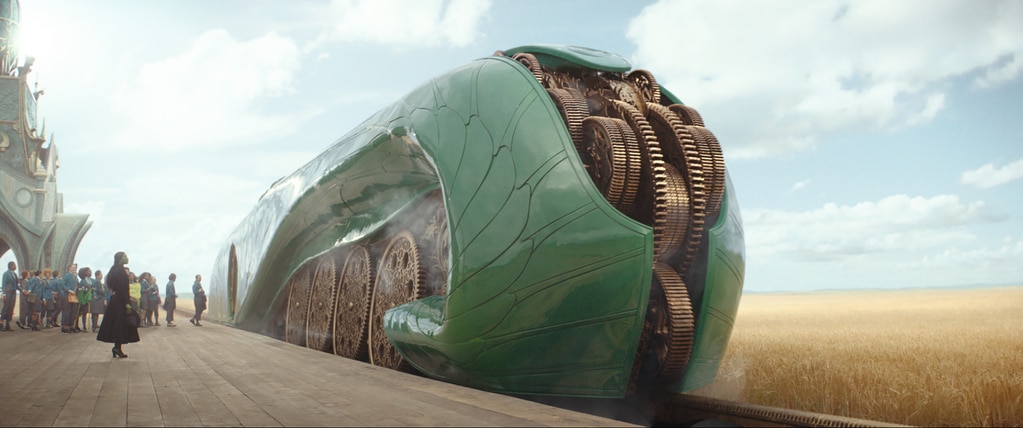
In the movie version of the story, Elphaba’s father appears at the train station and is introduced to Boq by Nessarose. This moment doesn’t happen in the stage musical; her father doesn’t come to see her off.
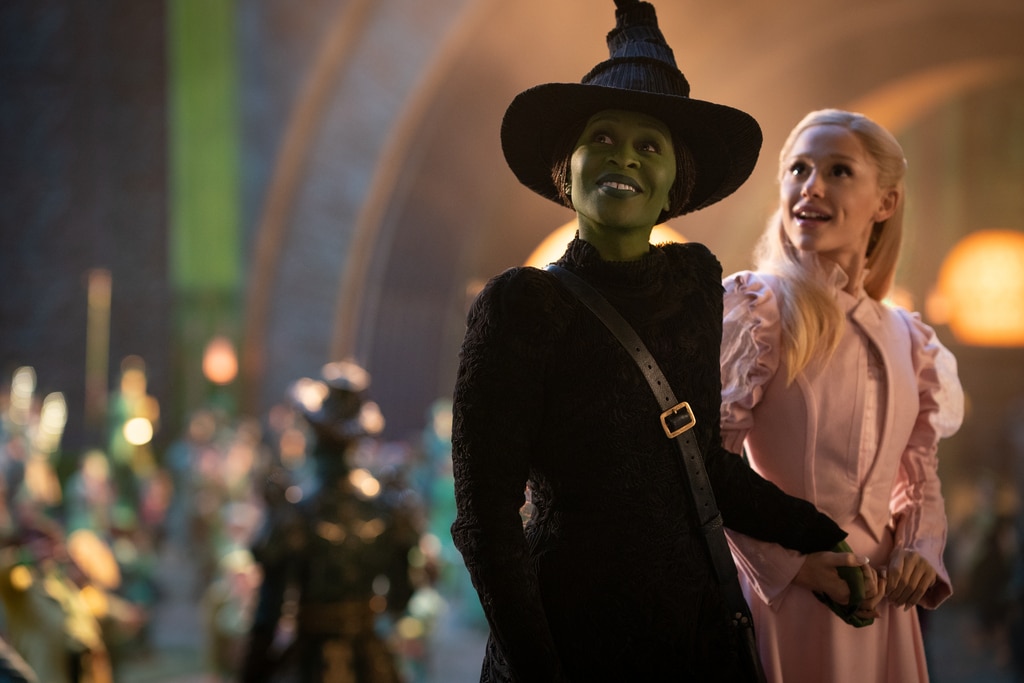
The film expands on the lore of the Grimmerie, an old spellbook written in a language no one in modern Oz understands. While it doesn’t include any completely new songs, a new part has been added to the song “One Short Day.” The extended cut of the movie deepens the legend of the Wizard, revealing he’s the only one who can read the Grimmerie – a long-awaited fulfillment of an Ozian prophecy. However, we later discover this isn’t true; the Wizard can’t read it, but Elphaba can.
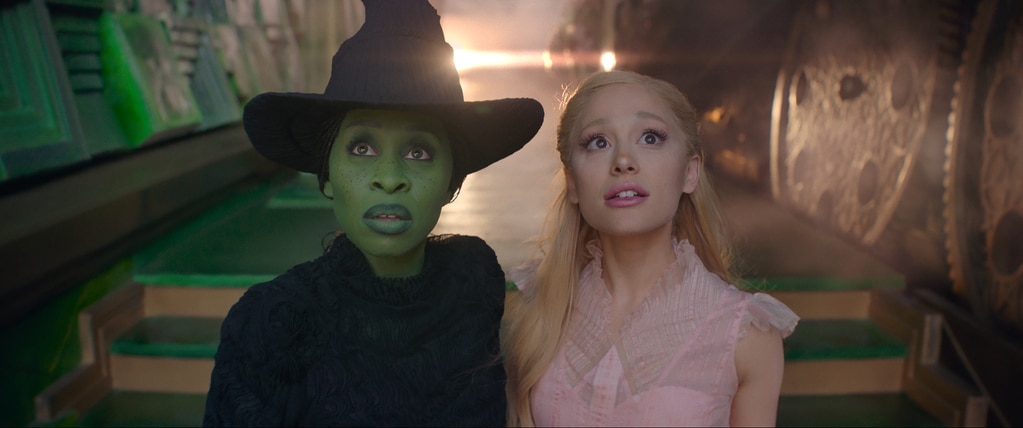
“One Short Day” underwent the biggest changes from the stage musical to the movie adaptation, and it includes a special treat for fans. The movie version features a new performance by the original Broadway stars of Elphaba and Glinda, Idina Menzel and Kristin Chenoweth. Credited as Wiz-O-Mania Super Stars, they play characters not found in the stage show and share a scene with Cynthia Erivo and Ariana Grande in the Emerald City, giving musical fans a delightful blast from the past.
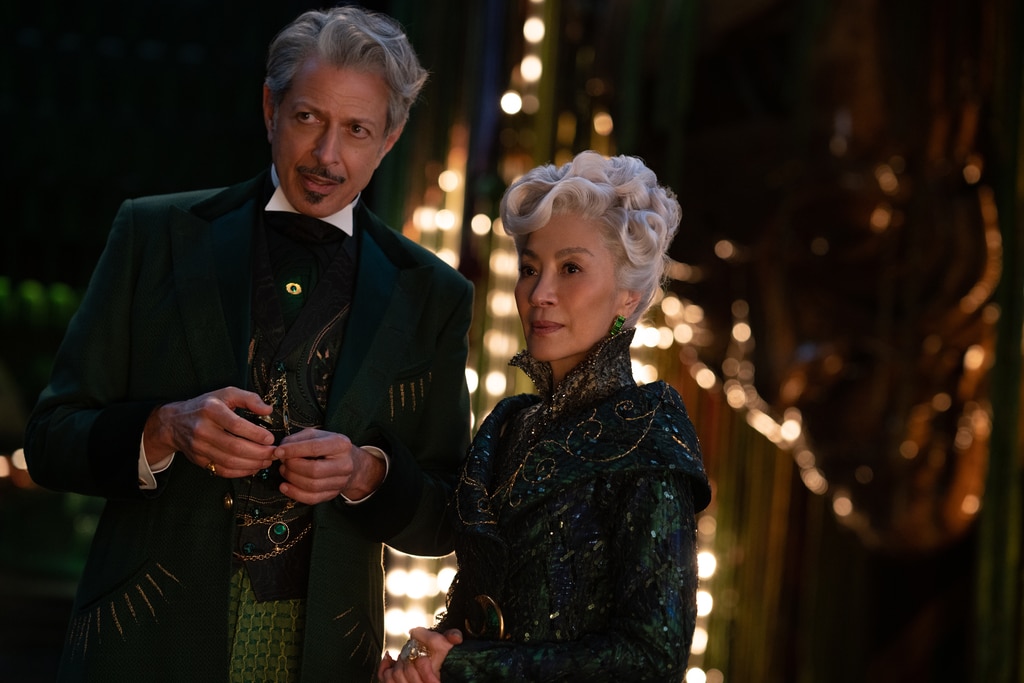
In both the stage and film versions of Wicked, the Wizard initially wins over Elphaba and Glinda with his charm. In the movie, he uses a large model of Oz to impress them, explaining his plan to build a road to the Emerald City. He even asks Elphaba and Glinda to choose the road’s color, which ultimately results in the creation of the iconic Yellow Brick Road.
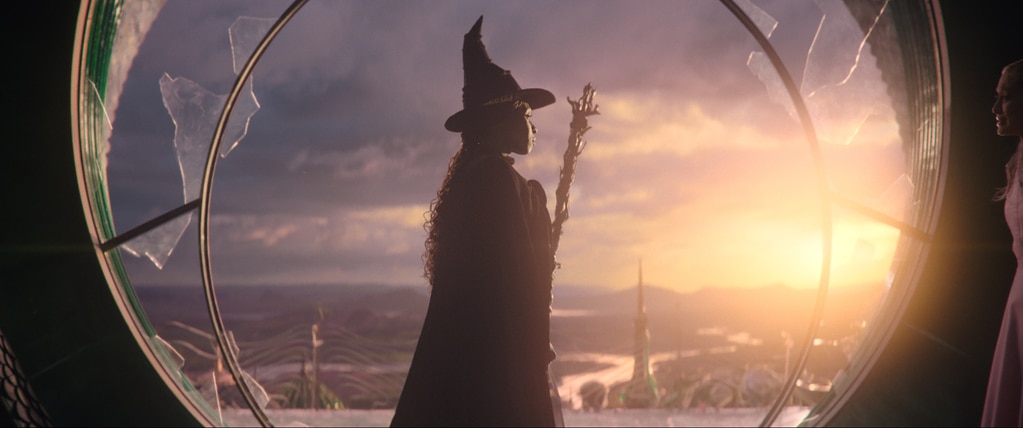
The film’s main plot points remain largely the same as the stage play, but Elphaba’s climactic song is longer. During the song, she has a vision of her younger self, which motivates her to fly away, abandon the Wizard and Glinda, and forge a new identity. This flashback doesn’t appear in the original stage production.
Read More
- When Perturbation Fails: Taming Light in Complex Cavities
- Jujutsu Kaisen Execution Delivers High-Stakes Action and the Most Shocking Twist of the Series (Review)
- Fluid Dynamics and the Promise of Quantum Computation
- Where Winds Meet: Best Weapon Combinations
- FC 26 reveals free preview mode and 10 classic squads
- Hazbin Hotel season 3 release date speculation and latest news
- 3 PS Plus Extra, Premium Games for December 2025 Leaked Early
- 7 Most Overpowered Characters in Fighting Games, Ranked
- Why Carrie Fisher’s Daughter Billie Lourd Will Always Talk About Grief
- TikToker Madeleine White Marries Andrew Fedyk: See Her Wedding Dress
2025-11-21 11:18